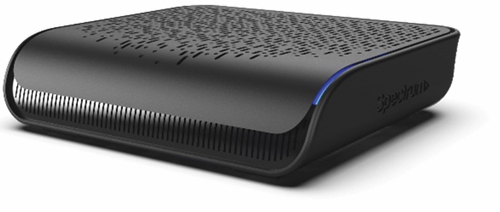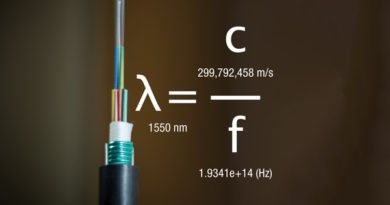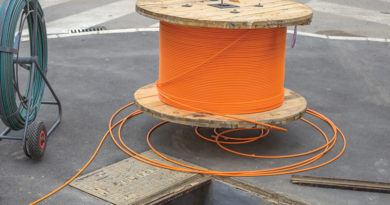The CPE of Ethernet Passive Optical Networks
By Scott Ingram and Steve Harris
Many of us are involved or have been aware of the activity in the latest deployments of fiber to the home (FTTH) in our industry. The activity is centered around two flavors of FTTH passive optical networks (PON). The first PON flavor comes from the Institute of Electrical and Electronics Engineers (IEEE), and the second from the International Telecommunication Union (ITU). IEEE specified 802.3ah EPON for 1 Gbps and 802.3av for 10 Gbps, as well as many other standards like Wi-Fi 7 802.11be. ITU specifies G.984.1 for 1 Gbps GPON and G.9807.1 for XGS-PON 10 Gbps, as well as other standards like G.694.1 for DWDM frequencies. Each of these standards requires a specific set of equipment to be deployed at the customer premises. This article focuses on EPON, and the associated technology used at the premises for deployment.
Ethernet has been around for over 50 years, with its origins at Xerox Palo Alto Research Center, PARC. As a Layer 2 communication protocol, Ethernet has changed the way our industry provided connectivity and is widely adopted across telecommunications. The Ethernet protocol also operates well in a FTTH network, called Ethernet PON (EPON). Ethernet is transforming the access network, providing 1 Gbps and 10 Gbps connectivity solutions, with additional options for 50 Gbps and beyond. EPON leverages an all-digital fiber optic transport system and signaling architecture called an optical distribution network or ODN. For those that are familiar with an HFC network that uses analog fiber, the ODN is typically used in place of this access network, or perhaps in a new greenfield application. A few operators are using an ODN to overlay their HFC network or an ODN that originates at a distributed access architecture (DAA) node. EPON is very flexible and has a wide following due to its agility. Furthermore, EPON provides up to 99.999% availability over a 20 km distance or more with optical amplification (e.g., DWDM). Since an ODN uses passive devices in the network as opposed to actives devices, it requires significantly less power than a traditional HFC access network.
For customers to connect to an HFC network or ODN, a piece of specialized equipment called customer premises equipment (CPE) is required to communicate over our communication networks. Traditional HFC access networks that leverage a CMTS or converged cable access platform (CCAP) use DOCSIS cable modems. For EPON, each customer is required to have the proper CPE that interprets the signaling and protocols for the network. In our case, the Ethernet protocol for Layer 2 and wavelength division / time division multiplexing (WDM/TDM) signaling at Layer 1, while IP is used at Layer 3. The layers reference back to the OSI model, which defined the layers of a communication network.
In EPON, the CPE used to communicate is called an optical network unit or ONU. An ONU’s function is to translate downstream optical signals into electrical signals and electrical signals into optical signals for the upstream. The ONU may be installed using two typical options, outside the premises or inside the premises. For cable operators, the common deployment of the CPE is within the customer premises.

Figure 1. EPON point to multipoint (PtMP) components
An ONU contains an optical receiver (Rx) and optical transmitter (Tx) for Layer 1 communication over the ODN. For example, in a 1 Gbps ONU for EPON, a 1310 nanometer (nm) distributed feedback (DFB) Tx laser is used and a 1490 nm P-intrinsic-N (PIN) paired with transimpedance amplifiers (TIA) to Rx. Some newer 10 Gbps ONU models may contain a small form-factor pluggable module (SFP) for swapping out the optical wavelengths. The ONU provides several options to connect CPE, Ethernet, Wi-Fi, and Bluetooth.

Figure 2. 10G EPON ONU modem inside the premises
The cable industry has traditionally chosen to utilize EPON instead of GPON due to the similarities in deploying and activating Ethernet and DOCSIS. DOCSIS Provisioning over Ethernet (DPoE) allows cable providers to utilize their existing provisioning systems to provision an ONU as a virtual cable modem (vCM) via the optical line terminal or OLT (a.k.a. fiber CMTS equivalent). This reusability aspect makes it easy to install fiber hardware without complex and costly updates to existing provisioning and activation systems.
Future Tech
As the needs of consumers and business alike continue to require additional bandwidth and latency sensitive connections, the cable industry looks beyond the current 10G symmetrical capabilities of this generation of ONU. 25G, 50G and 100G symmetrical connections are in trial now with next generation (NextGen) EPON and new ways of utilizing the existing light signals such as coherent optics will shepherd in the next generation of consumer devices to offer these speeds within the next five years. All of which may be easily enabled by making minor updates to the existing fiber plant, OLTs and next generation ONUs.

Figure 3. EPON CPE provisioning

Steven Harris
VP Global Market Development,
SCTE® a subsidiary of CableLabs®

Scott Ingram,
Sr. Product Manager – Internet Access CPE,
Charter Communications
Scott graduated from Colorado State University and has been working in the telecom industry for over 20 years. He is currently a Product Manager at Charter Communications in charge of the development of new Internet CPE, focused on DOCSIS modems and PON ONU.
Figures provide by authors.



